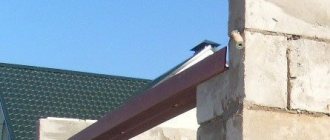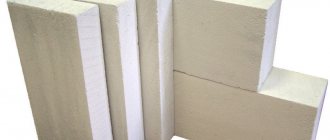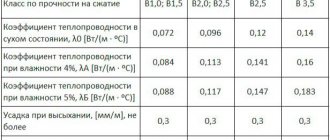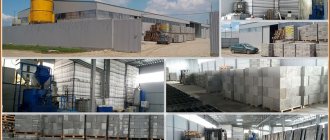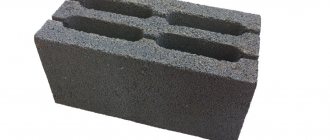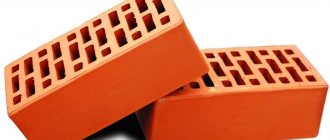In the modern world, many construction products are supplied in pallets, which can be covered with a special film to preserve their quality. This also applies to products made using a foaming agent.
How many products are in one pallet – we’ll figure it out!
Thus, it is sometimes useful for customers to know how many foam blocks are in one pallet in order to determine consumption and transportation.
Appearance of foam concrete blocks in the photo.
Main settings
A foam concrete block is a building material that resembles a brick in shape, but its dimensions are much larger. It is for this reason that work on the construction of buildings takes place in a short time, which cannot be said about the construction of bricks. One unit of the most common format (200x300x600 mm) in a masonry can replace 13 white and 15 red bricks .
Types of products
Before determining how many foam blocks are in a pallet, you need to familiarize yourself with the types of products .
The division is carried out based on density indicators, since this is what affects the strength and some other characteristics, on which the use of the material also depends.
- The thermal conductivity of the foam block is quite low. Thermal insulation products are actively used to insulate the side planes of load-bearing structures. Concrete grades used: 400 and 500. Strength is 9 kg/sq.m. cm.
- Structural thermal insulation blocks are a good material for the construction of walls and additional insulation of buildings. Concrete grades: from 600 to 900. Capable of withstanding 16-35 kg/sq.m. cm.
- Structural analogues are ideal for constructing external walls and other load-bearing parts. Concrete grades used: 1000-1200. They can withstand loads from 50 to 90 kg/sq.m. cm.
Standard product sizes are presented.
Note! Of course, the price of the final product largely depends on the density category. However, developers have an excellent opportunity to choose the best option.
Common sizes
The volume of one unit of material can be different, which can affect the labor intensity and speed of construction, especially if the work is done with your own hands.
As for professional workers, for them the dimensions of the product play a small role, since special equipment and structures are used in the process.
- 200x300x600 mm is a very popular block format, which allows, when laid on edge, to create a 20 cm layer for internal partitions and external walls with additional thermal insulation.
- 200x400x600 mm is a fairly common size, providing the opportunity to form external planes without carrying out insulation and sound insulation work.
- 100x300x600 mm - this format is most often used for the construction of internal walls.
Recommendation! When choosing dimensions, it is recommended to pay attention to the thickness of the product, because it is this parameter that affects the heat and sound insulation characteristics of the created plane.
How much does a foam block weigh?
The weight of the foam block depends on its size and density. Usually the shape of the foam block is rectangular.
The mass of the foam block will be the sum of the volume of foam concrete multiplied by its density.
Thermal insulating foam block weight table
| Foam block size(mm) | Foam block volume (m3) | Material Density | Weight |
| 600*300*200 | 0,036 | from 400 to 500kg/m3 | from 14.4 to 18 kg |
| 588*288*200 | 0,034 | from 400 to 500kg/m3 | from 13.6 kg to 17 kg |
| 500*300*200 | 0,030 | from 400 to 500kg/m3 | from 12 kg to 15 kg |
| 400*200*200 | 0,016 | from 400 to 500kg/m3 | from 6.4 kg. Up to 8 kg |
Weight of structural and thermal insulating foam block
600*300*200 0.036 m3 from 500 to 900 kg/m3 from 6.4 kg. Up to 32.4 kg.
588*288*200 0.034 m3 from 500 to 900 kg/m3
500*300*200 0.030 m3 from 500 to 900 kg/m3
400*200*200 0.016 m3 from 500 to 900 kg/m3
Weight of structural foam block
structural 600*300*200 0.036 m3 from 900 to 1200 kg/m3 from 32.4 kg to 43.2 kg.
588*288*200 0.034 m3 from 900 to 1200 kg/m3
500*300*200 0.030 m3 from 900 to 1200 kg/m3
400*200*200 0.016 m3 from 900 to 1200 kg/m3
Purchase of goods
Once you have been able to determine how many foam blocks are in the pallet, you can proceed directly to ordering .
It is recommended to purchase the material directly from the manufacturer’s warehouse, then you will be able to avoid contact with intermediaries and other persons who “inflate” prices.
- It is advisable to read reviews about the company. If a large number of reviews prevail, then it is better to refuse to purchase from this company.
- You need to make sure that the product is environmentally safe. To do this, the manufacturer must demonstrate quality certificates.
- You should also take into account the period of operation of the company, because bad companies fall apart quite quickly.
The products are packaged using a special film.
- How many foam blocks in 1 cube
- How many cinder blocks are in a pallet?
How many foam blocks are there in a cube?
The first thing you should take care of when purchasing foam blocks is counting the number of blocks that are needed for the construction of a particular object. This question is quite relevant both among professional builders and among newcomers to this business.
In order for the calculation of a certain number of foam blocks to be as accurate as possible, you must rely on the following parameters of the facility under construction:
- Length.
- Width.
- Height.
- Volume.
- Square.
Calculating the number of blocks for the construction of one wall can be very easy and simple; there are several options for this, for example, counting the square meters of the wall and constructing them into cubic meters.
It is worth knowing that foam blocks are sold in cubic meters, which means that in order to order a certain number of blocks, you need to know their number per cubic meter.
The popularity of building houses from this type of material is due to its excellent performance. Foam blocks have proven themselves as a building material that can withstand harsh weather conditions. It is not afraid of either cold or moisture, and besides, blocks of this type, despite their composition, are quite resistant to fire.
These factors determine the presence of special microsubstances that are present in the foam block. In addition, despite their lightness, blocks are good materials for the construction of load-bearing walls in buildings, because they are able to withstand enormous pressure per unit of area.
This resistance to stress is explained by the presence of plasticizers in the foam block. Due to these substances, blocks of this type are quite strong and can withstand high pressure without changing their shape and size.
Depending on the composition of the foam block, experts divide them into the following categories:
- Foam blocks for thermal insulation work outside the premises.
- Structural blocks for the construction of frame works of buildings.
- Soundproofing foam blocks.
As you can see, foam blocks are good in all areas of application, from sound insulation and thermal insulation to the construction of load-bearing walls in massive high-rise buildings.
Each of the specifics of using foam blocks is explained by its production and manufacturing. For example, foam blocks for sound insulation are made using a special technology that foams the polystyrene foam material from the inside. This creates porosity and a sound insulation effect, which is what is needed for this type of foam block.
Building construction blocks are renowned for their strength and durability.
The fact is that such a foam block contains M-500 cement with appropriate mineral and artificial additives that give the block hardness and density.
It is worth noting that this type of block is three times heavier than conventional ones. In addition, its price characteristics are also significantly higher than others.
Blocks for increasing the thermal insulation of a house are the cheapest. Such a building element is relatively light in weight, since in the production of such a foam block more attention is paid to the porous base inside the block. Due to the fact that there are small pores inside the block, the effect of solidification of the gases inside is formed, which is why the heat transfer from such a block is at the very minimum value.
How to calculate the number of blocks in a cube?
You can also calculate the number of blocks per cubic meter of supply without much effort, you just need to know the dimensions of the block itself, and this is:
1) Length - 0.6 m 2) Width - 0.3 m 3) Height - 0.2 m
With an easy mathematical calculation we can find out how much the volume of one foam block will be:
0.6*0.3*0.2=0.036 cubic meters.
The only thing left to do is divide one cubic meter by the volume of one block, as a result of which we get that one cubic meter contains 27.78 foam blocks.
By rounding we get that one cubic meter includes 27 blocks.
Exactly the same calculations must be performed with other block sizes.
How many foam blocks are in a pallet?
It must be said that foam blocks are supplied in packed pallets, therefore their quantity in a pallet does not depend at all on one cubic meter.
There are several types of pallets:
- 0.9 cubic meters, which holds 25 foam blocks.
- 1.44 cubic meters, which holds 40 foam blocks.
- 1.8 cubic meters, which holds 50 foam blocks.
Thus, knowing the calculated values of foam blocks and the type of delivery pallet, you can easily calculate how many pallets to order for the construction of the facility. To do this, you need to divide the total volume of all coatings on the object by the volume of the pallet, and only then multiply the resulting number by the number of blocks in the pallet.
Weight
The weight of an aerated block, just like its size, can be very different and depends not only on the dimensions, but also on the density. The higher the density of concrete, the more it weighs.
Types of aerated concrete by weight and density:
The lightest - they have many pores, the density is minimal, the material is usually used as insulation; it is not suitable for laying walls due to its low strength. The mass of such blocks is 200-500 kilograms per cubic meter. Heavy gas blocks are the most common option. A cubic meter weighs up to 500-900 kilograms. These blocks are ideal for constructing walls of low-rise buildings. Extra-heavy gas blocks - 900-1200 kilograms per cubic meter. Such blocks are used in high-rise construction; they are considered the most durable and dense, but also the heaviest.
Currently reading: Static industrial concrete floors and their impregnation
In order not to make a mistake when choosing a material, just look at its brand - it corresponds to the density, the number of kilograms per cubic meter. Thus, the brand of aerated block D400 indicates that the density of the material is 400 kg/m3, D600 – 600 kg/m3, etc.
How many aerated concrete blocks in 1 m3 in a pallet?
To calculate how many blocks fit on a pallet, you need to know exactly the dimensions of the blocks and the size of the pallet. As a rule, a pallet holds 40-180 blocks, depending on their size. But pallets can also be different, so usually when ordering material, this parameter is obtained from the manager. Knowing how many pieces of aerated concrete a pallet can hold, they indicate their number, and can also understand whether it will be possible to deliver aerated concrete in one transport trip.
On the other hand, cubic meters are usually used to calculate the number of gas blocks needed for work. The same indicator is indicated when ordering material, and the buyer is not particularly concerned about the number of pallets. But if you want to organize the delivery of gas blocks to the site yourself, it happens that you need to know the number of pieces on the pallet.
The table below shows the number of blocks of different sizes on pallets:
How many gas blocks in one cube
To find out how many pieces of gas block there are in a cube, you should carry out two simple steps:
- measurement of linear parameters of one module. Calculation of its volume in m3;
- the unit is divided by the resulting indicator.
If the block has dimensions of 300x250x625 mm, its volume is calculated as follows: 0.625*0.250*0.3 = 0.046875 m3. If one is divided by this value, the result is 21.33, which corresponds to 21 modules. Thus, 1 m³ of material of a specific size contains 21 blocks . You can calculate how many aerated concrete blocks in 1 cube for a material of any size.
Knowing how many gas blocks are in a cube, you can calculate the total financial costs of construction, the size of which depends on the number of storeys of the house or the dimensions of another building. In addition to quantity, weight must also be taken into account.
